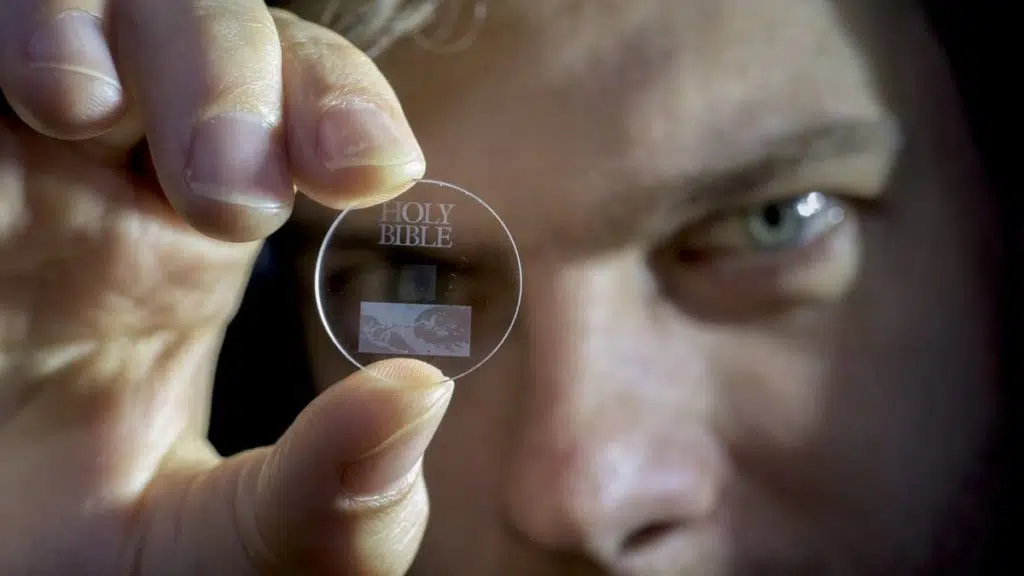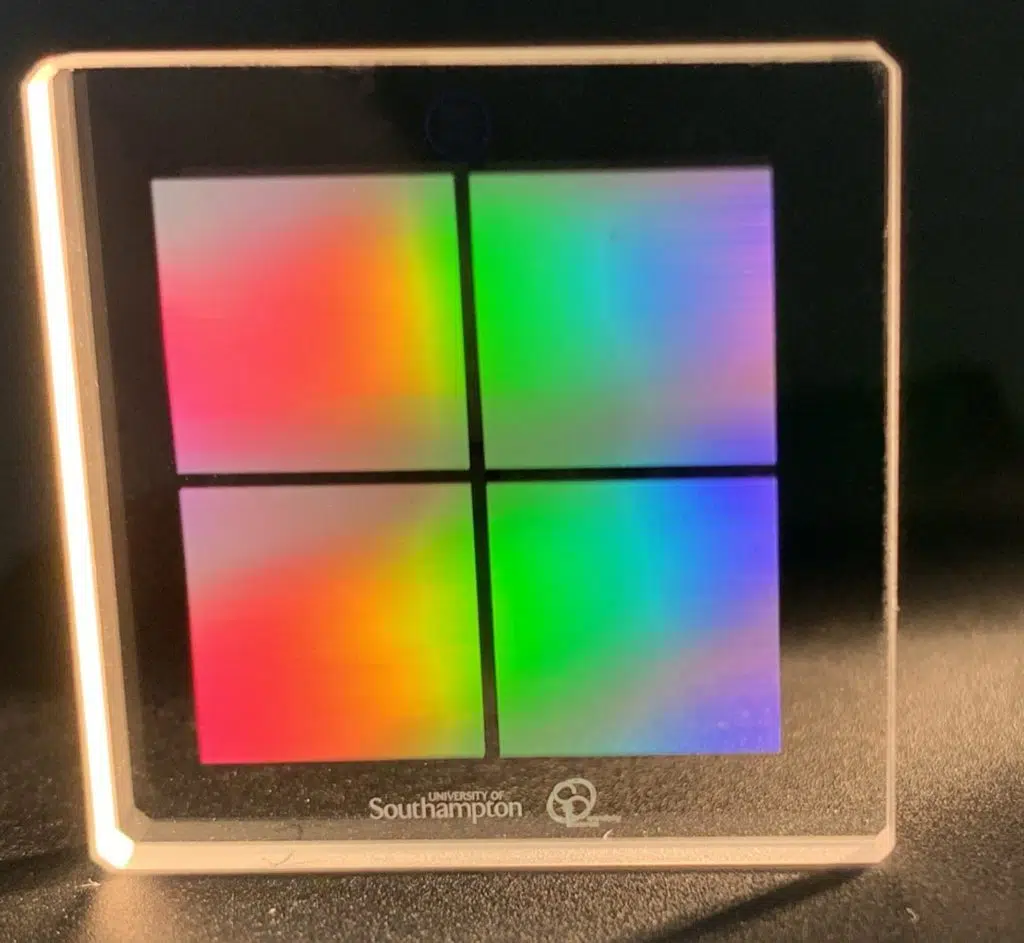
Researchers with the University of Southampton in UK have developed a speedy, energy-efficient laser writing method that brings high-capacity, glass-based optical storage closer to reality. Described as “5D” optical data storage, the potential medium comprises CD-sized glass discs that are more than 10,000 times denser than Blu-ray discs. They can store as much as 500 terabytes of data.
From Optica, a scientific organization supporting optics research and education:
Although 5D optical data storage in transparent materials has been demonstrated before, writing data fast enough and with a high enough density for real-world applications has proved challenging. To overcome this hurdle, the researchers used a femtosecond laser with a high repetition rate to create tiny pits containing a single nanolamella-like structure measuring just 500 by 50 nanometers each. […]
The researchers used their new method to write 5 gigabytes of text data onto a silica glass disc about the size of a conventional compact disc with nearly 100% readout accuracy. Each voxel contained four bits of information, and every two voxels corresponded to a text character. With the writing density available from the method, the disc would be able to hold 500 terabytes of data. With upgrades to the system that allow parallel writing, the researchers say it should be feasible to write this amount of data in about 60 days.
“Individuals and organizations are generating ever-larger datasets, creating the desperate need for more efficient forms of data storage with a high capacity, low energy consumption and long lifetime,” said doctoral researcher Yuhao Lei from the University of Southampton in the UK. “While cloud-based systems are designed more for temporary data, we believe that 5D data storage in glass could be useful for longer-term data storage for national archives, museums, libraries or private organizations.”
Source: Optica

